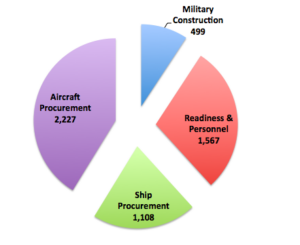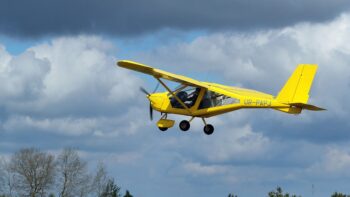
Navy F/A-18 Super Hornet
WASHINGTON: The Navy really needs more fighters. Buying 14 more Super Hornets isn’t just the No. 1 item on the Navy’s unfunded requirements list of items that didn’t fit the 2017 budget: The $1.5 billion purchase of F/A-18E/Fs makes up almost a third — 29 percent — of the total $5.4 billion wishlist.
- Add to the 14 Super Hornets a pair of F-35C Joint Strike Fighters, the No. 3 priority; two low-priority C-40 transports (#30); and an array of upgrades and weapons, and aircraft-related purchases make up $2.2 billion, 41 percent.
- Ship-related procurement, from landing craft to electronic warfare kits, is another $1.1 billion. That includes the No. 2 priority on the list, $433 million to complete construction of an Arleigh Burke-class destroyer (DDG) mostly funded in 2016.
- Military readiness and personnel items make up another $1.6 billion, ranging from ship maintenance to auditability of Navy finances to funding sailors’ moves to new assignments. But all these items come much lower down the list, the highest at #16.
- Finally, military construction weighs in at half a billion. The MILCON items aren’t included in the main list of priorities but in a separate list, probably because Congress covers them under a different account in a different bill.

Navy unfunded requirements 2017, broad categories
Unlike the other three services whose unfunded requirements we’ve previously published — the Army, Air Force, and Marine Corps — the Navy ordered all its non-MILCON items by priority, from the Hornets at #1 to a tugboat, the T-ATS(X), at #31. (Remember, tugboat fans, that just getting your program on this list is a huge achievement). Many of the higher-priority items are not the ones with higher costs.

For example, items #4, 5, and 6 total just $147 million, but they all relate to electronic warfare and signals intelligence, a top priority as the Navy reorients to counter sophisticated Russian and Chinese threats. Items #7 through #15 total a another $366 million of small-but-vital “for want of a nail, a battle was lost” items: new torpedoes, missiles, and bombs; command-and-control upgrades for destroyers and submarines; and various sonars to detect hostile subs.
Only at #16, with the first of the readiness items, do the prices spike again, with $645 million for better maintenance — which has been chronically shortchanged for both ships and aircraft. After various readiness enhancements comes another ship upgrade, the CANES computer network, followed in turn by $187 million for four landing craft of various kinds. Then the list trickles out in various small items until the last two long-shots on the wishlist, $207 million for the C-40s and $75 million for that tug.
Air Force picks ‘resilient’ GPS, MTI for Kendall’s ‘quick start’ push
Production of an E-7A Wedgetail aircraft has also slipped by a year, according to Air Force Secretary Frank Kendall.


























